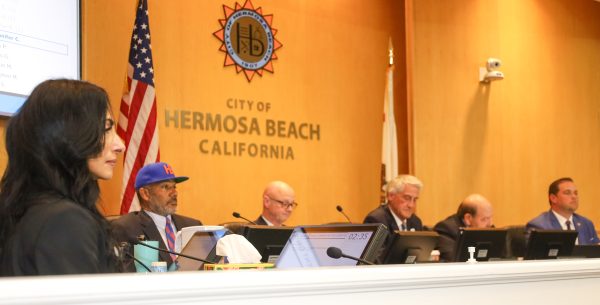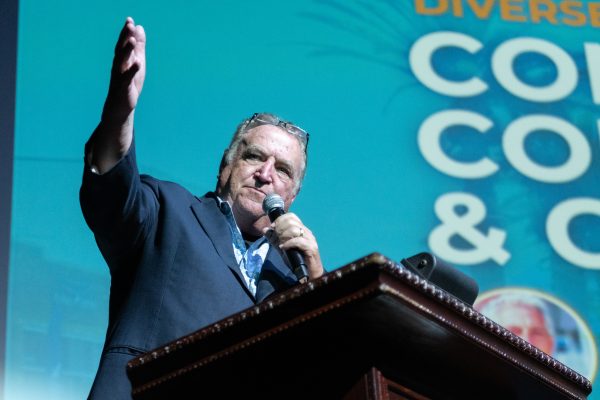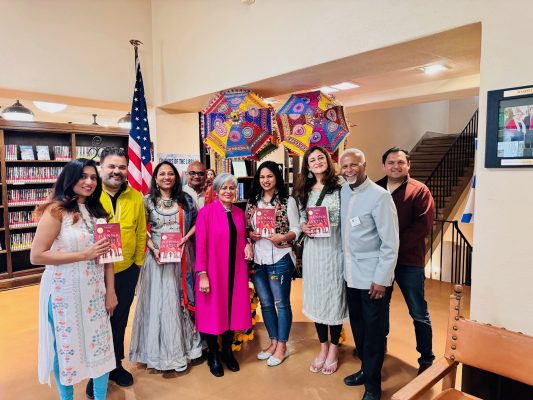
There is something about war and embroidery. The Bayeux Tapestry is a priceless artifact that uses more than 200 feet of cloth to tell the story of the Norman Conquest of England. The Civil War spurred the development of the modern sewing machine with the demand for Union uniforms. And when Myron Halpern returned home from World War II, with him came a piece of history written in stitches.
Halpern was a member of the 75th Infantry Division of the United States Army. He was deployed in Europe and fought in the Battle of the Bulge, considered the largest and bloodiest battle of the war. And at some point in the conflagration, he and his unit captured a band of German soldiers, and with them a Nazi swastika flag that had flown in Germany and Belgium. Halpern, whose wife’s father had been a tailor to Wall Street bankers, discovered that one of the captured soldiers was a tailor in civilian life. And so the unit got the German soldier to sew a “75” into the middle of the flag, and all the members the unit signed their names. The soldiers had taken a symbol of hate and evil, and reclaimed it as an emblem of victory.
Today, the flag is in in the collection of the United States Holocaust Memorial Museum in Washington D.C. It will eventually come to rest at the David and Sela Shapell Family Collections and Conservation Center, a state-of-the-art facility now under construction in Bowie, Maryland. But until August of this year, it sat, wrapped up in a lens cap, in a Hermosa Beach home.
Myron’s son Jason Halpern had kept the flag after receiving it from his father, who died in 1966. The details of exactly how his father came to possess the flag are sketchy. (“I don’t care what war you are talking about, vets are going to be very, very hesitant as to what they reveal. I never got the facts as to how that soldier was in fact captured,” Halpern said.) In the 50 years since his father’s death, the younger Halpern estimates he took the flag out fewer than a dozen times, with half of those instances coming within the last five years as he attempted to find a home for the heirloom.
Spend a bit of time with Halpern, a Hermosa resident, and his passion for history becomes clear. He readily reaches for military terms like “ordnance.” He weaves old War Department regulations into touching family anecdotes. And like his father, he is Jewish. But he is loathe to lodge his father or the contribution of the flag in the massive context of the greatest tragedy of the 20th century. For him, the donation was an effort to preserve a memory that is no less valuable for being personal and particular.
“The bigger message is obviously going to be there: the knowledge that World War II was real,” Halpern said. “But all I can do is give you the platitudes of what the general public might be able to get out of it. This was first and foremost about honoring my father and his legacy, that his heirs for generations to come will be able to see this stuff.”
In an attic no more

Surprisingly, there are many people who want to donate Nazi flags to an institution dedicated to combatting the very thing for which the regime stood. Teresa Pollin, curator of arts and artifacts at the Holocaust museum, said that soldiers serving in Europe often took them as symbols of victory, and that their children or grandchildren will find them, years later, stuffed in a sock drawer.
Most are not accepted. Part of the problem, she said, would be in tactfully displaying a large number of the hateful symbols. (There is currently one swastika flag on permanent exhibition in Washington, D.C.) But the difficulty is primarily a matter of limited space. Often times, she will direct potential donors elsewhere, such as the National World War II Museum in New Orleans.
However, when Halpern called, Pollin sensed that this flag was “different.” The presence of the signatures of each of the men, and Myron Halpern’s Jewish heritage, indicated a special historical worth.
“Jewish-American soldiers had a double motivation. It was very important for them to go and fight,” Pollin said, noting that Halpern was unusual in that he was 26 years old when he went to war. “Myron was older than other soldiers, and he still volunteered.”
Steven Klappholz, western regional director for the Holocaust Museum, said that acquiring these kinds of materials is part of the ongoing effort to preserve evidence of the Holocaust, a task which has taken on growing importance as more of the people who lived through the period die. Although the museum’s traditional focus is on victims and survivors, part of what made Halpern’s flag so noteworthy, he said, was that that shed light on “the liberators.”
Halpern brought the flag to Washington, D.C. in August. The museum put on a small ceremony, during which Halpern displayed the flag and other associated relics, including letters sent between the front and home. During the ceremony, Halpern had a moment to hold up the flag, displaying the side with the “75” patch and all the signatures away from him, so that it could be photographed. And though the flag had been in his possession for 50 years, it was his first opportunity to look at it from the back, and see it for something other than the family treasure it had become.
“For the first time, I’m looking at what we all came to hate — there are no names on the other side. I’m looking at the other side of a Nazi flag: the thing that our guys saw when they were getting killed,” Halpern said.
Worth remembering

Halpen had a relatively short time with his father. He was born while Myron, or Moe as everyone knew him, was away at war, and did not meet him until he was 16 months old. And his father died young, at 48, leaving the world when Halpern was just 21. But it was enough time for thousands of tiny gestures and quiet sacrifices, as when his father refused to work on Yom Kippur, knowing it would mean losing a job in a recession. And it was more than enough time to become Halpern’s hero. It is Halpern’s hope that future generations of his family will be able to see a physical record of his father’s life and times, and get a sense of the man he was.
He got a glimpse of the power of this memory when his nephew Mark came to the August ceremony. Mark, who never met Moe, was looking at some of the donated photos, when Halpern turned and saw a look of joy on his face.
“My father’s grandson, who never met my father, is now getting a picture of who his granddad was. That is the dividend,” Halpern said.
In the future, select relatives of Halpern may have access to the donated items, but the facility where the flag will ultimately be housed will not be open to the general public, Klappholz said. Although most of its contents will be digitized and available over the Internet, the materials themselves are fragile, and will be available primarily to scholars and educators. Klappholz compared it to the “rare book room” of a library, and said such restrictions are necessary to fulfill the museum’s fundamental mission.
“We have to preserve history and maintain it, so that future generations will have the ability to see the primary sources,” he said. “It is the sacred duty of the museum to ensure that the memory of the Holocaust lives on forever.”
It can be difficult to square this lofty goal with the intimate value that Halpern attaches to the flag. But believing that history is controlled by the curators is just as cynical as presuming that it is written by the winners. Though the museum is tasked with managing the memory of a continent-wide catastrophe, preserving the personal story of each contribution remains of the highest importance.
“We meet many survivors who do not even have a grave for their parents or sibling. They treat the museum as a cemetery. They know that we will take care of their most precious mementos forever,” Pollin said.











